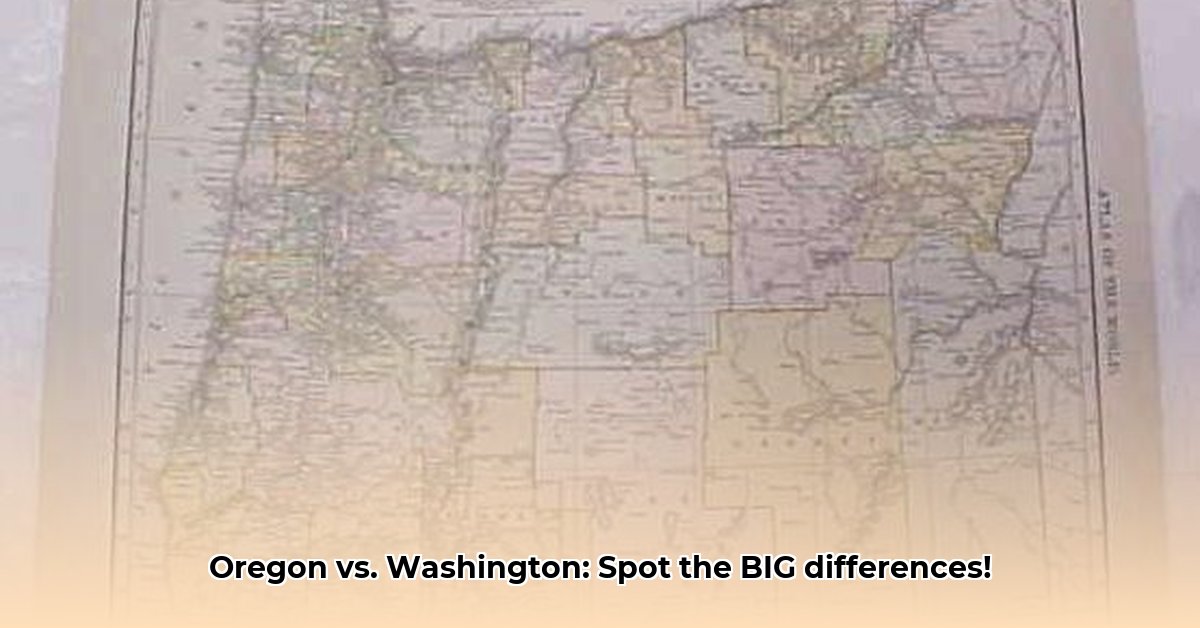
Oregon vs. Washington: A Tale of Two Pacific Northwest States
The Pacific Northwest boasts two stunning states, Oregon and Washington, often lumped together but possessing distinct characteristics. This deep dive explores the key differences, revealing why each state offers a unique experience. We'll examine geographic features, economic landscapes, infrastructure needs, environmental concerns, and ultimately, the contrasting qualities of life they offer. For a visual comparison, check out this helpful Oregon/Washington map.
Size and Population: A Foundation for Difference
First, the sheer scale: Oregon is approximately 40% larger than Washington in land area. Yet, Washington boasts nearly double the population. This fundamental difference influences everything from infrastructure challenges to economic development. Oregon's expansive landscapes foster a sense of open space and outdoor adventure, while Washington's denser population centers create a more dynamic and bustling atmosphere. How does this population density disparity impact their respective economies and infrastructure needs? Let’s explore.
Geographical Features: Shaping Landscapes and Economies
Beyond sheer size, the geography itself profoundly shapes the identity of each state. Oregon's dramatic coastline, a breathtaking blend of rugged cliffs and pristine beaches, drives a significant portion of its tourism industry. Washington, while possessing a coastline, is dominated by the majestic Cascade Mountains, a spine of volcanic peaks that influences its recreational and resource-based industries. The Columbia River, a shared border, acts as a vital artery for transportation and resource management, highlighting the intertwined destinies of these neighbors. Think of the differences between timber-based industries of Washington’s mountains and the fishing and tourism of Oregon’s coast. How are these differences reflected in their respective economies?
Economic Diversification: Tech Hubs and Agricultural Roots
Washington's larger population, concentrated around Seattle, has fueled a booming technology sector. Seattle has become a global tech center, attracting talent and investment worldwide. Oregon, while experiencing growth in tech, maintains a stronger reliance on agriculture, forestry, and natural resource-based industries. This difference reflects varied economic models, each with its own strengths and challenges. Consider the GDP per capita as a measure of average income: might we find significant variations that illuminate quality of life differences?
Infrastructure Demands: Meeting the Needs of Diverse Populations
The population disparity directly influences infrastructure needs. Washington, with its dense urban centers, grapples with managing rapid urban growth, including housing shortages, traffic congestion, and the need for robust public transportation. Oregon, with its more dispersed population, faces the challenge of connecting widespread communities, ensuring access to essential services like broadband internet across vast distances. These differing needs shape infrastructure investment priorities. How might these infrastructure gaps impact economic growth and quality of life in the long run?
Environmental Stewardship: Shared Challenges, Unique Approaches
Both states share responsibility for the Columbia River watershed and its ecosystems. Yet, their environmental approaches differ. Washington, with its concentrated urban areas, struggles with air and water pollution typical of densely populated regions. Oregon, characterized by vast, more sparsely populated landscapes, focuses on biodiversity conservation, managing natural resources across diverse terrains. How do these differing environmental priorities translate into policy and expenditure? What are the shared vulnerabilities to climate change?
A Comparative Conclusion: Understanding the Nuances
In essence, comparing Oregon and Washington transcends a simple map comparison. It's a study of how geography and population shape a state’s identity and trajectory – two very different paths to success. The disparities in size, population, economic structures, infrastructure challenges and environmental priorities reveal the unique character of each state. It's a tale of two neighboring states, connected by geography yet distinguished by their distinct developmental paths. Further explorations into social indicators, such as income inequality, healthcare access, and education levels, would provide an even deeper understanding of the lives of residents in these two fascinating states.